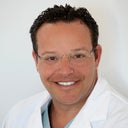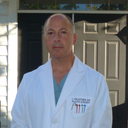I heard about a natural breast enhancement in Europe where they grow your own fat cells in a lab and enlarge your breasts with your own fat cells, for people who do not care for silicone or saline. Is this even possible? Can I enlarge my breasts with fat injections from stem cells or my own body? And if so is it done in the US?
Answers (10)
From board-certified doctors and trusted medical professionals
Dr. Steven Teitelbaum, MD

Dr. Steven Teitelbaum, MD
Board Certified Plastic Surgeon
Answer
Dr. Jerome Edelstein, MD

Dr. Jerome Edelstein, MD
Certified Plastic Surgeon
Answer
Dr. Christopher V. Pelletiere, MD

Dr. Christopher V. Pelletiere, MD
Board Certified Plastic Surgeon
Answer
Dr. Ricardo L. Rodriguez, MD

Dr. Ricardo L. Rodriguez, MD
Board Certified Plastic Surgeon
Answer
Dr. Scott C. Sattler, MD, FACS

Dr. Scott C. Sattler, MD, FACS
Board Certified Plastic Surgeon
Answer
Dr. Robert Whitfield, MD
Dr. Robert Whitfield, MD
Board Certified Plastic Surgeon
Answer
Dr. Joel B. Singer, MD
Dr. Joel B. Singer, MD
Board Certified Plastic Surgeon
Answer
Dr. Samir Shureih, MD
Dr. Samir Shureih, MD
Board Certified Plastic Surgeon
Answer
Dr. Anthony Youn, MD
Dr. Anthony Youn, MD
Board Certified Plastic Surgeon
Answer
Dr. Steven Wallach, MD
Dr. Steven Wallach, MD
Board Certified Plastic Surgeon
Answer
More Breast Fat Transfer Questions
See all Breast Fat Transfer Q&AWE SEND PRETTY
EMAILS
What’s trending? Who’s turning heads? Which TikTok myths need busting? We’ve got you. No fluff, no gatekeeping—just real talk. Get our free, unfiltered newsletter.